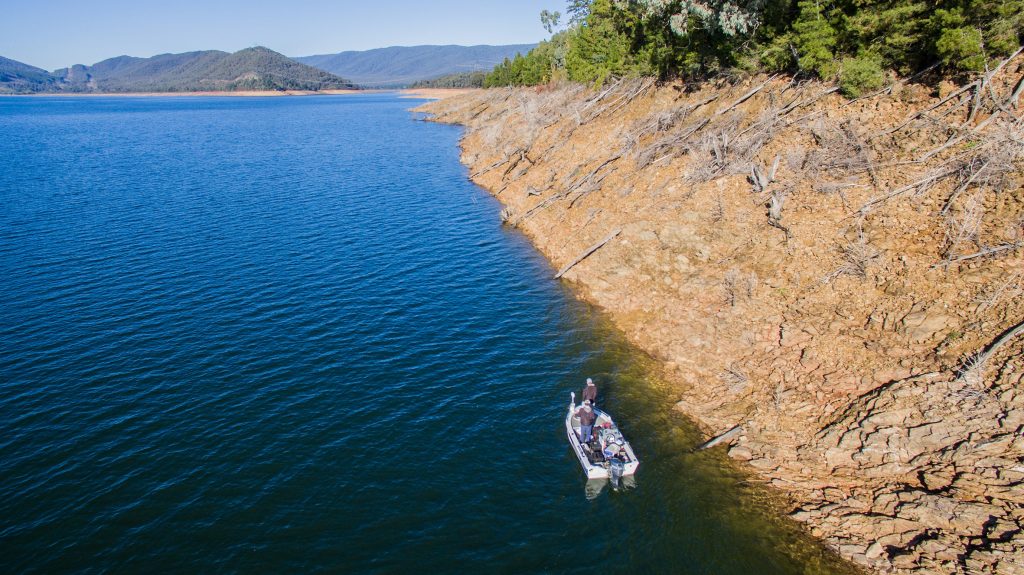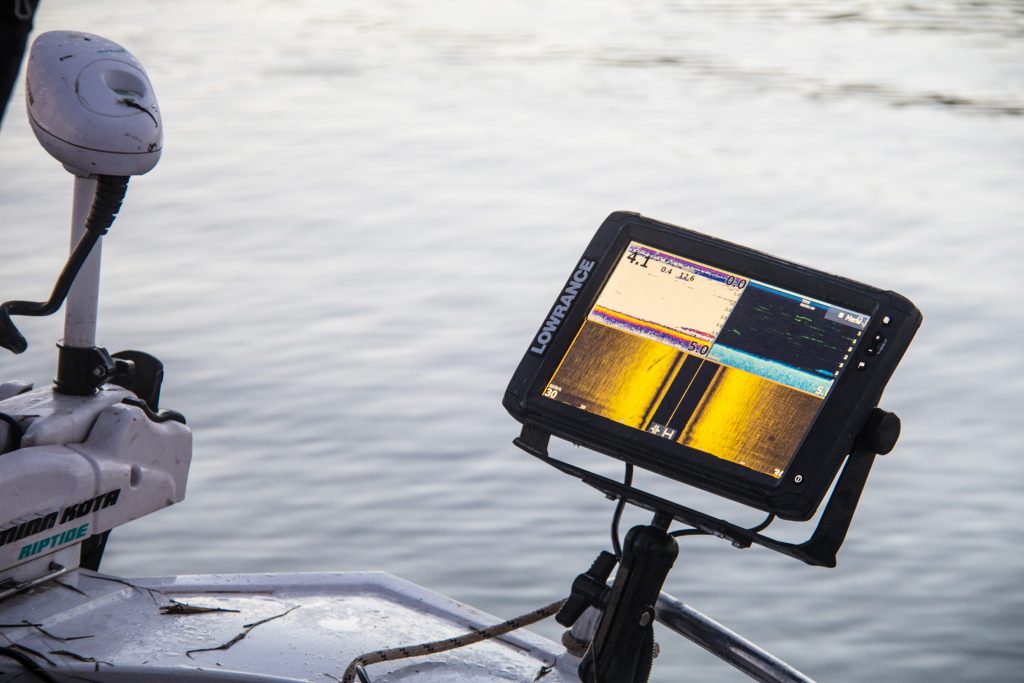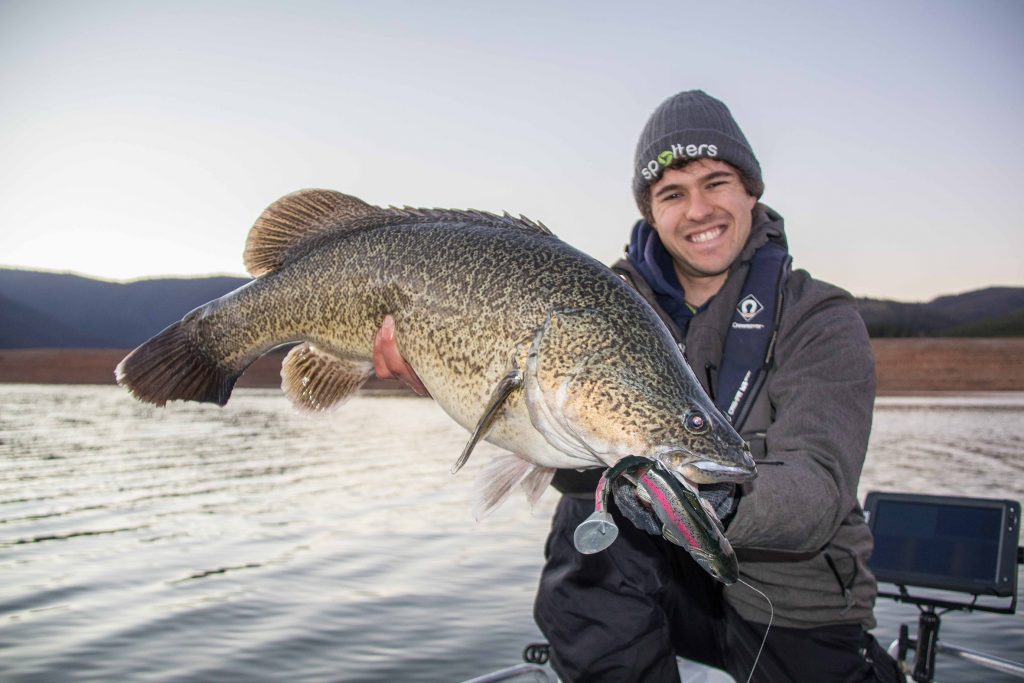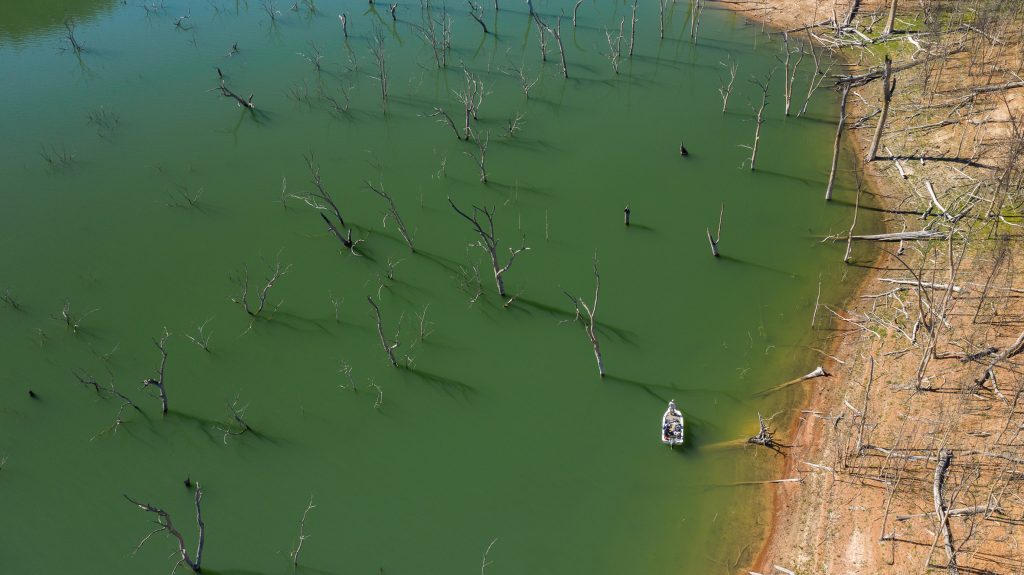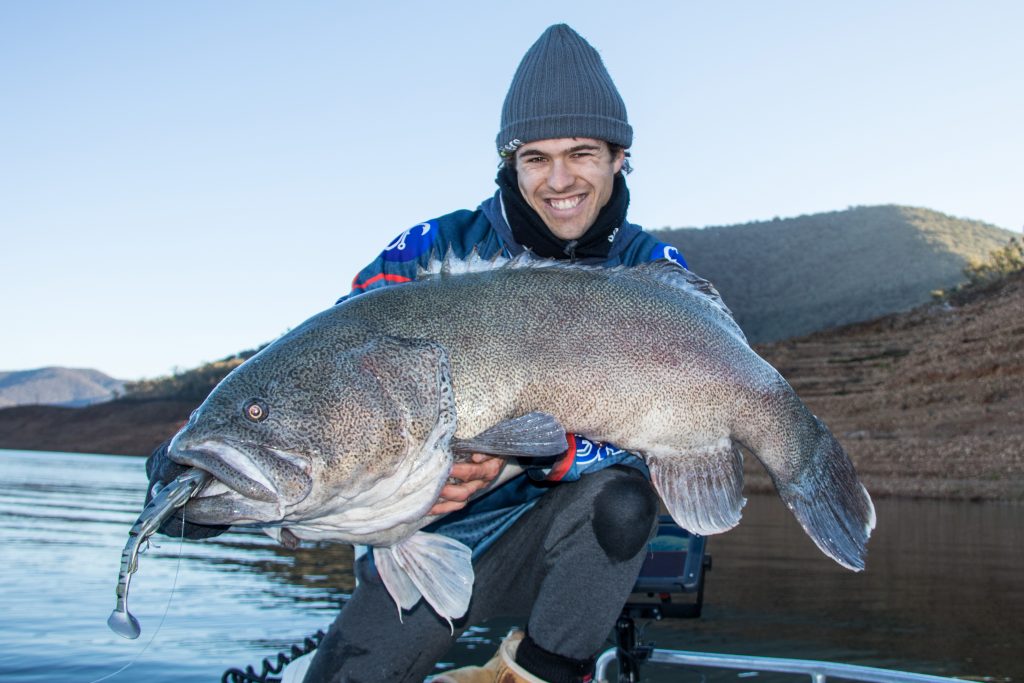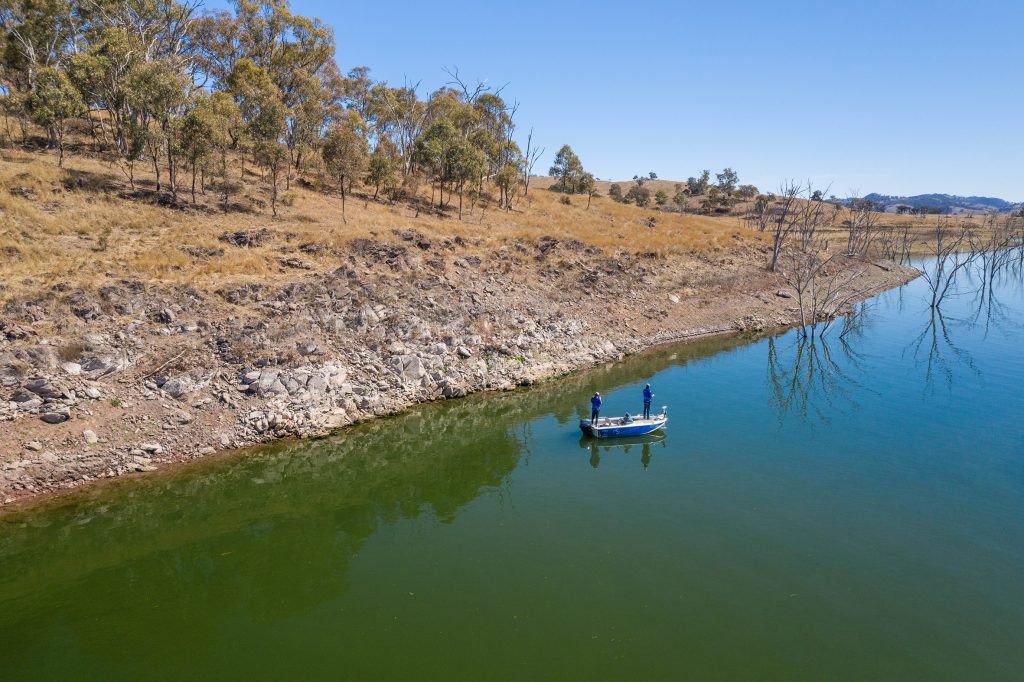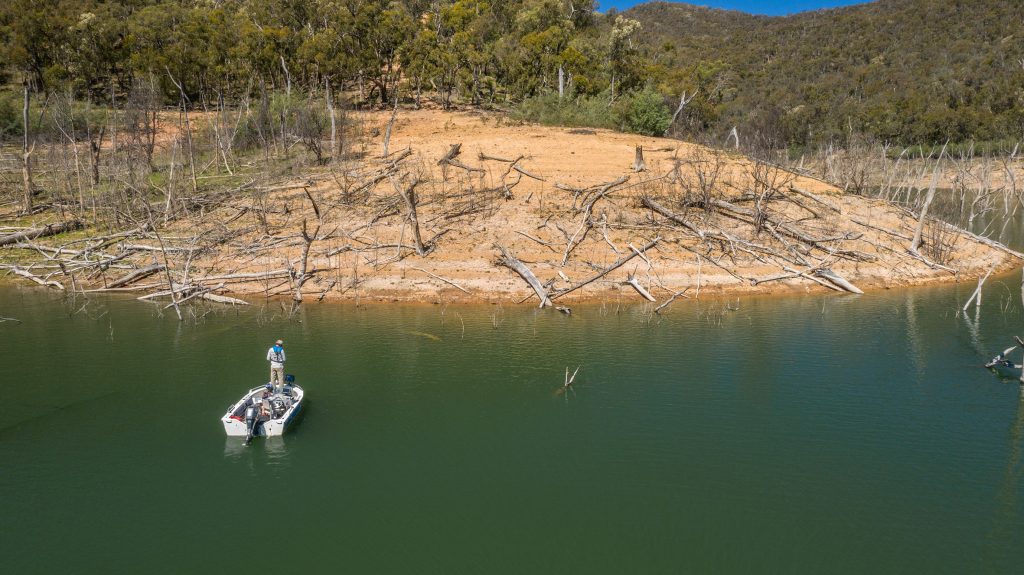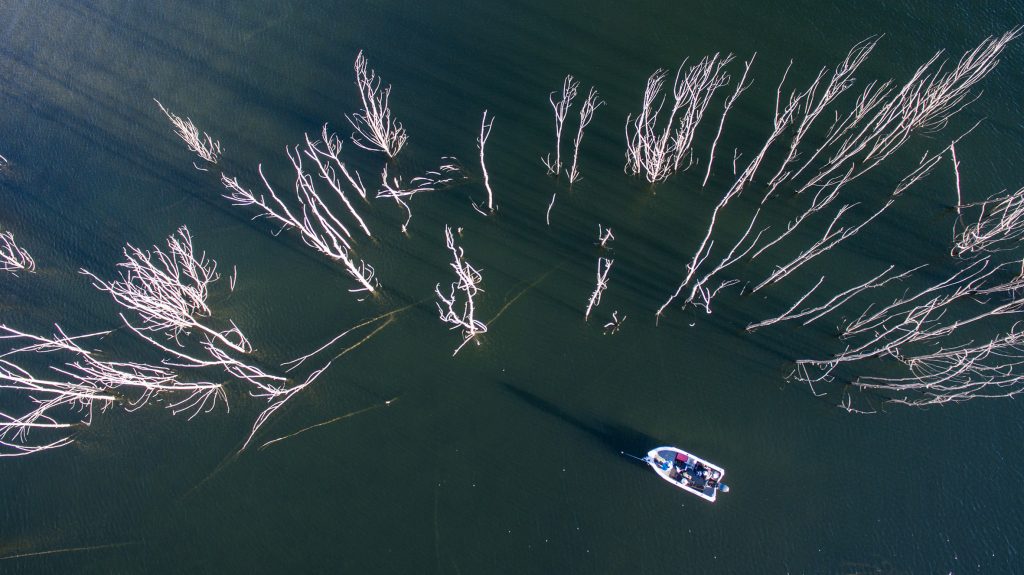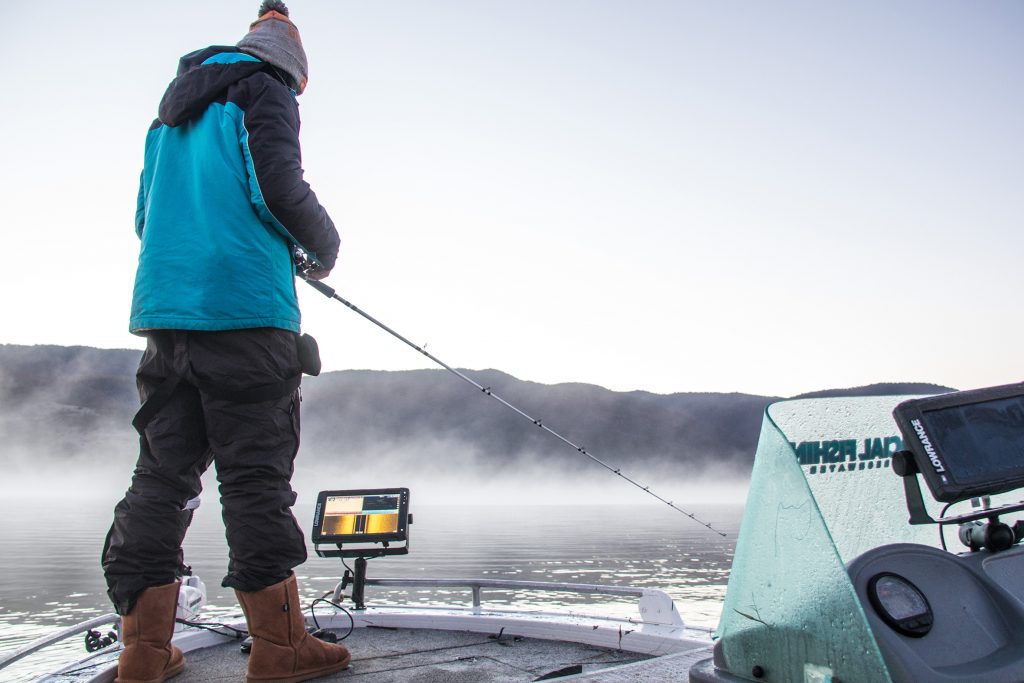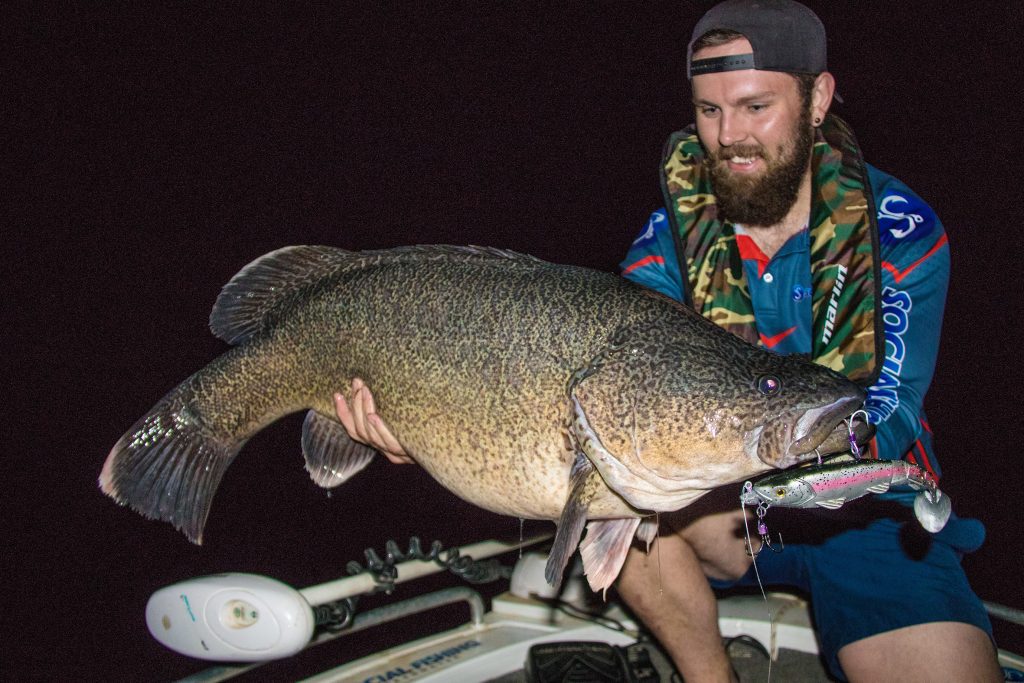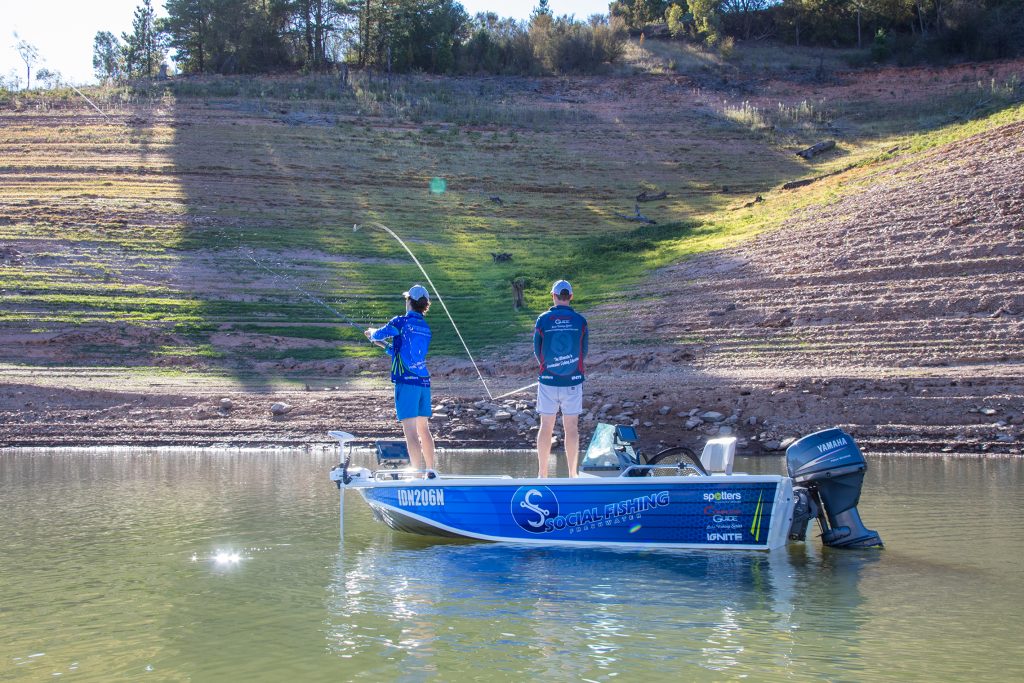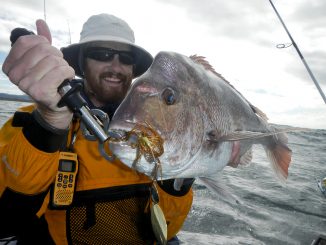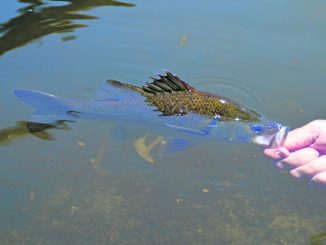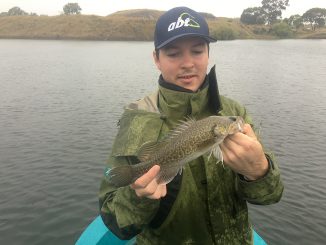
by Rhys Creed •
Casting lures is becoming more and more popular, and in some locations it’s starting to overtake the once go-to method of trolling. Don’t get me wrong, trolling is a very successful technique that allows you to cover large amounts of water in the shortest timeframe. It also keeps your lure in the strike zone the entire time.
However, in some situations casting is a more appropriate choice, and it’s also a more active technique that brings out more of the angler inside of us. It’s like an art form of constantly being switched on to where we are casting, feeling the lure as it passes through the underwater battlefield, ensuring it’s in the strike zone and at the correct depth. Our awareness as an angler is heightened, and I believe that’s what drives us to cast lures – especially when it comes to chasing Murray cod. And also, casting works!
In this article I’m going to talk about the three main techniques or approaches that I use when chasing impoundment cod. The process isn’t as straightforward as just casting, letting it sink and winding the lure back in. You can make it that simple, but the rewards won’t consistently follow.
I’m also going to share a few other critical tips and key lessons to help you on your future trips. Ensuring that you approach, analyze and use the correct technique is vital, and will result in more consistent success.
Style 1: Diagonal Casting to Bank
This first style is the most common and most popular, and for good reason: it’s simple, easy and it works. If you have cast for cod before, chances are you have probably used this technique. In saying that, there are some key rules to do it properly and many a time I’ve taken mates fishing and they have broken the number one rule!
I’ll cover that rule in a minute. First, I want to explain the technique.
To start with, you should position the boat out off the bank in your desired depth (which changes depending on the conditions, season, time of day and bank structure). For this example let’s say we are working a steep rocky bank in 8m of water.
Then all you do is slowly move along the bank with your electric motor and cast at a diagonal angle forward towards the bank (electric motors are vital; without one all these techniques are almost impossible to execute correctly). Most of the time you’ll want to land within a metre or two of the bank, especially if it’s a steeper bank. From there you work your lure back to the boat and continue the process.
Now for the important rule. When using this technique, you MUST cast at a diagonal angle forward in the direction you are travelling. “Why is that?” I hear you ask.
I’ll explain by telling you what happens when you DON’T obey this rule. If you are to cast straight into the bank or back behind the boat (the opposite direction in which you’re travelling) you don’t have complete control over the lure. The reason for this is that the boat is moving the opposite way, and dragging your lure away from the structure, preventing it from sinking properly. You just cannot work the lure effectively nor naturally.
If you cast your lure forward (and it only has to be slightly), you can allow it to sink without pressure, and retrieve it with full control back to the boat.
The next thing you might be wondering is how far forward you have to cast. This is where boat speed is critical. I prefer to work extremely slowly, because that way I have a long time to cast and retrieve, and I can work it right back to the boat properly and before the boat ‘overtakes’ my lure and starts dragging it. The slower you work (drive the boat along the bank) the less of an angle you have to cast (you can cast perpendicular in at the bank, with a slight angle). If you’re working quickly, you have to cast with more of an angle forward, but still at that diagonal angle.
When do we use this style?
You can use this style any time you like, and when working any type of structure. Rocky banks, standing timber, flat banks, gullies or creek beds – it will work on them all. It’s the most popular style, and is the one that I use most of the time. It’s the best way to cover lots of water and every depth, because you’re casting in shallow and working your lure out deep. It’s the go-to technique if you’re not sure what depth the fish are sitting in.
When you first visit a new lake that you’ve never fished before or even a new section of the lake, it would be the technique I would use. I also use this technique about 95% of the time when working steep rocky banks in places like Burrinjuck Dam. I just work nice and slow, and cast slightly diagonally forward.
Style 2: Parallel Casting
The second casting style is underused and underrated when it comes to targeting Murray cod. It is used a lot when chasing golden perch that school up and sit in specific depths, but most people don’t know that it can work just as well on cod.
I’m guessing this technique doesn’t need much explaining; you just hold your boat out from the bank and cast parallel or straight ahead. With this technique, the ‘working forwards’ rule still applies, although it’s almost impossible to get it wrong, unless you start drifting backwards away from the lure. As you’re moving in the direction you’re casting you’ll always maintain full control over your lure.
When do we use this style?
You won’t use this technique as much as the first one, but there are times when it works incredibly well. The main reason as to why you would cast parallel is when you know what depth the fish are sitting in, or you happen to know about a good ridge or line of structure that is sitting exactly in that depth along the bank. Usually it’s the first reason.
For example, you may have worked out that the hungry fish are sitting in 6m and you’re working a set of rocky points. Instead of wasting your time and casting in against the bank and only working the lure through that 6m mark occasionally, you may as well keep it there as long as possible by casting parallel.
One thing to note with this technique is that it will take longer for the lure to sink, especially if you’re fishing deeper than 6-7m of water. This means you will lose a bit of your cast and time. You need to be patient and allow your lure to get to the bottom.
I like to use this technique in places like Blowering Dam when I’m fishing the flatter banks chasing giant cod, especially in the heart of winter. On these large, flat banks, you can find yourself a long way from the edge but it doesn’t mean you aren’t in the prime location. We know that the fish sit in the 3-5m mark, so we try to hold the boat in 4-5m and cast straight ahead of the boat. Because we are fishing shallow it doesn’t take too long for the lures to sink, and then we slow roll them back to the boat with a few pauses here and there. This is a prime technique for targeting big winter cod at night and early in the morning.
Style 3: Direct Casting towards a Feature Point (Point of Interest)
The last of the three techniques is casting at some sort of feature or point of interest that needs more attention than just a quick drive by. We use this technique when we come across a really steep or gnarly rocky point or a large set of submerged logs that we have found on the sounder – anything that basically screams cod and needs the time and casts before moving on to the next spot. It isn’t a technique that we set out to use, it’s more of a change from Style 1 when we find these key areas.
Best of all, it’s the simplest technique. You just hold the boat stationary out from the structure, and make your casts. Because you aren’t moving there aren’t any rules about where you cast, because no matter what you do you will always have full control over your lure.
When do we use this style?
I use this technique when fishing large boulders, points or rocky ledges that stand out from all the surrounding structure. Those are the key spots that catch your eye, and you know they must hold cod. I use this technique a lot at Burrinjuck Dam when I’m working the super steep rocky banks.
One thing to note when casting at those steep banks is that the technique is a little different from normal. These fish will be sitting tight in against the ledge, and the best way to target them is to cast your lure in as close as possible to the bank and allow it to sink. When it hits the bottom, give it one crank of the handle and allow it to sink again. This way your lure will stay as close to the bank as possible, falling through the key strike zones. If you give the lure a big lift and a few winds, you’ll rip it too far from the bank. Remember this is just on those extremely steep, almost vertical cliff-like banks.
Extra Tips to help with your Casting Sessions
Fast or slow? What speed is best?
By speed I’m talking the speed that the boat travels. I know I already touched on this earlier, but I want to go into a little more depth. Just so you know, when I mean fast, I don’t mean too fast for chasing cod. You’re still working along the bank slowly, casting your lure in against the bank and winding it back. It’s just about how many casts you put in along that stretch.
Here is an example to make it a little clearer.
• Slow: each cast is 1-2m apart
• Fast: each cast is 5-7m a apart
So what speed is best?
Both speeds work, and it all depends on a few things. The main consideration is whether you know that there are fish there. The time to cover a bank quickly is when you’re not sure where the fish are, or which bank is the best. I use this approach when fishing a place or bank for the first time as I don’t want to spend too much time working it over. If you know the fish are there, then definitely work slowly!
I much prefer to take my time and work a bank thoroughly – that’s just how I fish. I want to make sure I give the fish time to see my lure. I fish with good friends who work slightly quicker. You should start out by following that simple rule, and then fine-tune your approach to figure out what works best for you.
Casting’s best friend: a sounder
A high-quality sounder is your best friend for all styles of fishing, but casting in particular. First of all, it helps you navigate, and it gives you the depth and temperature, which are the first things you need when working along a bank.
If you have a high quality downscan and sidescan sounder you’ll also be able to see the contours and the structure type below… and most importantly, the bait!
I find a lot of anglers get caught up on trying to find cod and then cast to them. Yes, this does work, but a lot of the cod (especially the ones that are ready to feed) are sitting extremely tight to structure, ready to ambush. They aren’t sitting out in the open, and a lot of the time you won’t actually see them on your sounder.
What you will find though is the bait – the carp, redfin and yellowbelly schools, which will sit up just off the structure. Finding the bait is key, and it’s always better to fish areas which have plenty of activity.
This article has only just scratched the surface of lure casting for Murray cod. However, it gives you a strong foundation to work from, as it covers the fundamentals about casting styles and your approach, which many anglers forget. All three casting styles work in the correct situation. Start out with Style 1 until you find the fish, and if you work out that they are sitting in a particular depth, change up to Style 2. Then when you come across the biggest log jam you’ve ever seen, pull up and start using Style 3!

